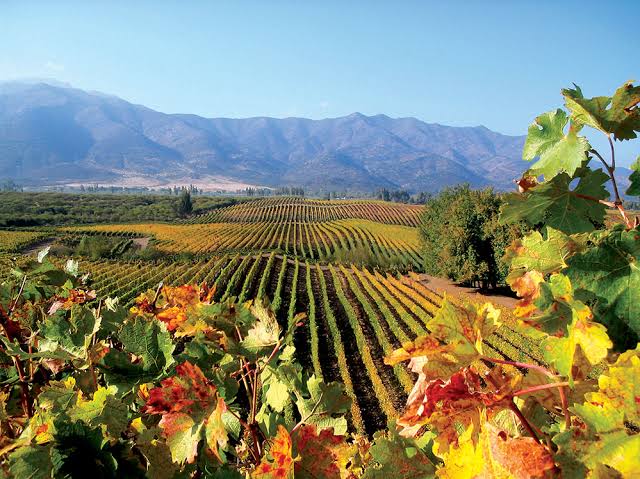Vineyard Gems and Liquid Gold: A Journey Through Argentina's Finest Wines
Argentina, a country brimming with culture, history, and breathtaking landscapes, has another gem to its name: the world-renowned wine industry. Nestled against the scenic backdrop of the Andes, Argentina's vineyards have for centuries been the crucible for vintages enjoyed around the world. Malbec is the crown jewel of

Argentina, a country brimming with culture, history, and breathtaking landscapes, has another gem to its name: the world-renowned wine industry. Nestled against the scenic backdrop of the Andes, Argentina's vineyards have for centuries been the crucible for vintages enjoyed around the world.
Malbec is the crown jewel of Argentina's vineyards, a grape variety that found its true home in the sun-drenched valleys of Mendoza, a region synonymous with Argentine wine. Planted in high-altitude vineyards under the watchful gaze of the towering Andes, the grapes here have given birth to Malbec wines of unprecedented character and quality, bearing notes of black fruit, red plum, violets, and a hint of spice.
Not far from Mendoza lies the Uco Valley, a rising star in the world of viticulture. With its cooler climate and diverse soil, Uco Valley wines are bold and aromatic, lending a distinct edge to the Malbecs grown in the region. Here, Bodega Salentein, an estate marrying innovation and tradition, produces wines that reflect the rich terroir of the valley.
Venturing further into the foothills of the Andes, one discovers the province of Salta, home to some of the highest vineyards in the world. Torrontés reigns supreme here, a native white grape variety producing fragrant, crisp wines with floral notes of roses, peaches, and citrus. The Colomé estate in Salta, founded in 1831, boasts vineyards that stretch to the skies, reaching up to 10,000 feet above sea level.
Beyond Malbec and Torrontés, Argentina is coming into its own with a plethora of varietals. The Patagonia region in the south, known for its stark beauty and relentless winds, is seeing success with Pinot Noir and Merlot, while Bonarda, a grape that has thrived in Argentina for centuries, is undergoing a renaissance of its own.
Indeed, the Argentine wine industry is a blend of tradition and innovation. Its passionate winemakers, blessed with diverse terroirs and optimal growing conditions, continue to perfect the craft handed down through generations. As you raise a glass of Argentine wine to your lips and savor the first sip, you taste not just the wine but the soul of Argentina itself.
So, to lovers of the grape in all its forms, we say this: from the vibrant Malbecs of Mendoza to the expressive Torrontés of Salta, Argentina's vineyards are calling. Answer the call and embark on a journey of discovery through the liquid poetry that is Argentine wine. Cheers to that!
Vintages of Velvet and Silk: Unveiling the Character of Argentina's Celebrated Wines
The character of Argentina's celebrated wines is a testament to the country's diverse terroir and its winemakers' commitment to preserving the unique characteristics of each grape varietal. In the landscape of Argentina's wine industry, certain varieties stand out for their exceptional quality and distinctive profile.
Undeniably, the most famous grape variety that Argentina has to offer is the Malbec. Originally from France, it found in Mendoza its ideal environment. Argentine Malbecs, especially those from the high-altitude vineyards of Mendoza, are characterized by a deep ruby color and robust flavors of black cherry, plum, and blackberry, underlined by subtle notes of vanilla and sweet tobacco from oak aging. These wines are rich, full-bodied and pair perfectly with Argentina's famed asados (barbecue).
Next, we travel to the province of Salta, the cradle of Torrontés. This white grape variety is distinctly Argentine, a floral and fragrant wine with a surprising depth of flavors. On the nose, Torrontés wines reveal intense aromas of roses, geranium, peach, and lemon. The palate is well balanced, with a pleasant acidity and a crisp, fresh finish that makes it an excellent companion to seafood, spicy dishes, or enjoyed on its own.
Venturing south to Patagonia, we encounter Pinot Noir. In the cooler climate of this southern region, Pinot Noir grapes produce wines that are elegant, light-bodied, with bright acidity. Aromas and flavors of red fruits like strawberries and cherries are typical, along with earthy notes of forest floor and mushrooms.
In addition to these prominent varieties, Argentina is nurturing an exciting range of grape varieties that show great promise. Among these, Bonarda stands out. Originally from Italy, it has found a home in Argentina and is second only to Malbec in acreage. Argentine Bonarda wines are typically fruity and fresh, with lower tannins and flavors of cherry, plum, fig, and sometimes a hint of chocolate.
Cabernet Sauvignon, an international variety, also fares well in the Argentine terroir, particularly in the regions of Mendoza and Salta. Argentine Cabernet Sauvignon is known for its deep color, black fruit flavors, and pepper notes, producing wines with good structure and aging potential.
Indeed, the mosaic of Argentina's wines paints a vibrant picture of its viticultural prowess. These wines, each with their distinctive character, offer a palette of flavors that is as diverse as the country's breathtaking landscapes. To sip an Argentine wine is to embark on a sensorial journey across Argentina's terroir, a journey as invigorating as it is enlightening. So, let's raise a glass to Argentina, a land of vinous treasures waiting to be explored!
More Than a Pour: Wine Production as a Lifestyle in Argentina
In the heart of Argentina, wine is much more than a simple agricultural product or a delightful beverage to be enjoyed with dinner. It is, in fact, a way of life – a tradition that courses through the veins of its people just as surely as the mighty Paraná River winds its way through the country. It’s a heritage that stretches back centuries, brought by Spanish settlers and honed through time and perseverance.
Visit any Argentine vineyard, and you'll encounter an ethos that seamlessly merges the past and present. The age-old traditions of viticulture passed down through generations are complemented by innovative techniques and sustainable practices. It is a living testimony to the constant dialogue between respect for tradition and the embrace of progress.
The vineyards themselves, studded amidst Argentina's diverse landscapes, are places of social gathering where time slows down. The cycle of the vine becomes a rhythm by which life is paced - the hopeful planting, the patient nurturing, the joyous harvesting, and the quiet dormancy before the cycle begins anew.
In cities and small towns alike, wine accompanies the daily meals, be it an elaborate asado or a simple empanada lunch. Each bottle uncorked tells a story, a tale of the land and weather from which it sprung, and of the hands that skillfully coaxed it from vine to bottle. It’s not simply a matter of quenching thirst, but of sharing experiences, narrating tales, and maintaining a connection with the earth.
And, at the end of the day, the wine produced in Argentina isn’t just for Argentines. It’s a gift to the world, a piece of the country’s soul transformed into liquid and sent out to share its story with everyone who takes a sip. It invites the world to partake in the Argentine way of life, one bottle at a time.
So, wine production in Argentina isn't merely an industry - it's a celebration of culture, history, and community. It's a philosophy, a dedication, and a passion. It is, in every sense, a lifestyle. As the Argentines would say, "Salud!"




